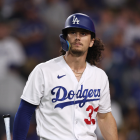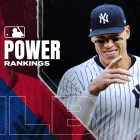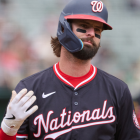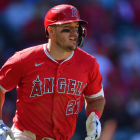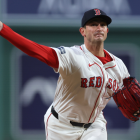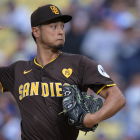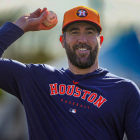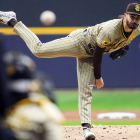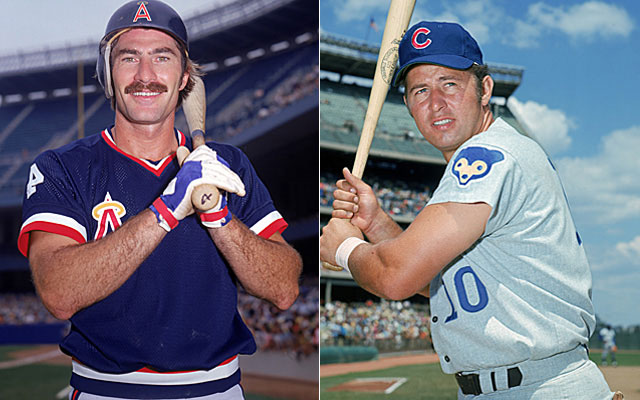
As most know, when a player receives less than five percent of the vote in any given BBWAA Baseball Hall of Fame election, he falls off the ballot. Let's call it being "five percented" for the sake of this discussion. In light of my hunch that Gary Sheffield and his 509 home runs -- in addition to many other Hall-worthy stats -- will be five percented this season, I figured I would look at the very best Hall candidates to ever fall off the ballot on their first try.
I only went back to 1967, because that's when the current voting rules were implemented.
With apologies to John Franco, David Cone, Will Clark, Dave Stieb, Reggie Smith, Wilbur Wood, Boog Powell, Vada Pinson, Norm Cash, Frank Howard, Billy Pierce, Mark Grace, Kevin Brown and a litany of others, here are my top 10 players to be five percented in their first chance at Cooperstown under the current voting rules.
Ron Santo
A nine-time All-Star in 15 seasons, Santo was an elite third baseman who apparently committed the crime of not being Brooks Robinson on defense. He also drew lots of walks, so his great on-base percentage (.362) was taking a back seat to his marginal batting average (.277) in the minds of voters in 1980. He got just 3.9 percent of the vote. Due to a voting amnesty -- hat-tip to Sports Illustrated's Hall of Fame guru Jay Jaffe here, as I didn't know about this -- Santo was added back to the ballot in 1985. Santo eventually got into the Hall via the Veterans Commmittee. Using Jaffe's JAWS method, Santo is the seventh-best Hall candidate in history at third base, but, again, only got 3.9 percent of the vote in 1980 -- when he would've been second best after Eddie Mathews.
Bobby Grich
A good way to find underrated players from the past? Find guys who had good patience at the plate. Like Santo, Grich took lots of walks. Since people only looked at batting average back then, the .266 career figure doesn't do it for the old guard. Grich had a career .371 OBP though. Thanks to very good defense and good power for the position as well, Grich weighs in at seventh in JAWS among second basemen, ahead of the likes of Frankie Frisch, Ryne Sandberg and Roberto Alomar. Still, Grich got just 2.6 percent of the vote in 1992.
Dick Allen
He fell one vote shy of making the Hall of Fame this year via the Veterans Committee. Here's what I wrote about Allen earlier this offseason:
His prime was short, but I'll take the dominance over someone being a good player for longer (see Kaat, Jim) if everything checks out. In Allen's 11-season prime (1964-74), he hit .299/.386/.554 (165 OPS+). His average per 162 games: 31 doubles, nine triples, 35 homers, 107 RBI, 106 runs. In that stretch, he won a Rookie of the Year, an MVP, went to seven All-Star Games and led the league in OPS four times. Remember that "feared hitter" narrative that helped push Jim Rice, just to name one, into the Hall? Allen was top-10 in intentional walks in seven different seasons.
Allen got 3.5 percent of the vote in 1983, but also was placed back on the ballot in 1985 like Santo.
Ted Simmons
I can't really answer the question as to why Simmons is so historically underrated. Being in Johnny Bench's shadow? That's possible. The eight-time All-Star hit .285/.348/.437 (118 OPS+) in his career with 2,472 hits, 483 doubles, 248 homers and 1,389 RBI. He walked 855 times compared to 694 strikeouts. Among catchers, he's one of the better hitters in history and ranks 10th in JAWS, ahead of Gabby Hartnett and Roy Campanella.
Kenny Lofton
One of the great leadoff men of his generation, Lofton ended his career with a .299 batting average and .372 OBP. He scored 1,528 runs and ranks 15th in history with 622 steals. He only averaged 78 strikeouts per every 162 games. He was quite familiar with winning, too, playing in 11 postseasons with six different franchises. Being a speed guy in a power era probably hurt his prestige some, as he only garnered 3.2 percent of the vote in 2013. He's ninth among center fielders in JAWS, ahead of Richie Ashburn, Andre Dawson (yes, Hawk played almost half his games in CF), Hack Wilson and a litany of other Hall of Famers.
Lou Whitaker
Present Hall of Fame candidate Alan Trammell teamed with Whitaker to form the longest-tenured double-play duo in baseball history, and both were exceptional. Trammell has hung around on the ballot for over a decade, but Whitaker was eliminated in one swipe, with just 2.9 percent of the vote in 2001. In parts of 19 years, Whitaker hit .276/.363/.426 (117 OPS+) with 2,369 hits, 420 doubles, 244 homers and 143 steals. He walked more than he struck out (1,197 BB, 1,099 K) and played good defense. He ranks 11th among second basemen in JAWS, ahead of Alomar, Craig Biggio and Joe Gordon.
Minnie Minoso
Another man who found his way back onto the ballot and could still get in via the Veterans Committee, Minoso only got 1.8 percent of the vote in 1969. He made it back on the ballot by playing in the majors again.
Here's his case, as I wrote earlier this offseason:
Does he get a boost for being the first black Cuban in the majors? Probably. After all, it's the "Hall of Fame" and that's fame-inspiring. Speaking of fame, Minoso played in five decades and appeared in a game at age 54, making him the fourth-oldest player ever. A publicity stunt, sure, but only because he had previously played in four different decades based upon merit (and good timing). I wouldn't suggest this stuff alone should get him in, but it's all part of the puzzle.
The other part is that he could play. Minoso hit .298/.389/.459 (130 OPS+) with 1,936 hits and topped 1,000 and runs and RBI. He had 336 doubles and led the league in triples three times as well as steals three times. He led the majors in getting hit by a pitch nine times and was a seven-time All-Star. He won three Gold Gloves and received MVP votes in eight different seasons.
Richie Ashburn
Ashburn made it into the Hall via the Veterans Committee in 1995, but in 1968 he got just 2.1 percent of the vote.
Widely considered a very good defender, Ashburn hit .308 in his career with a .396 OBP and 2,574 hits. He also stole 234 bases. He's 11th in JAWS among center fielders.
Ken Boyer
Like Allen and Minoso, Boyer is still being held out via the Veterans Committee. Here's what I wrote on Boyer when profiling the Golden Era candidates this winter:
To begin his career, Boyer was consistently very good for the Cardinals. From 1955-64, he hit between 18 and 32 homers every single season, with exactly 24 in each of the last four seasons. A well-rounded player, he went over 10 steals five times and also won five Gold Gloves. The 1964 MVP won a World Series and was a seven-time All-Star.
Overall, Boyer hit .287/.349/.462 (116 OPS+) with 2,143 hits, 318 doubles, 282 homers and over 1,100 RBI and runs.
Boyer got just 2.5 percent of the vote in his first try.
Al Oliver
The seven-time All-Star compiled 2,743 hits in his career, along with 529 doubles (38th all-time) and a slash line of .303/.344/.451 (121 OPS+). He only got 4.3 percent of the vote in 1991, likely due to him not having great power (219 HR) or speed (84 steals). He also ranks all the way down at 49th in JAWS among center fielders.
So there we have it. If Sheffield is five percented this year, will he be the greatest five percenter ever? He's definitely in the running.













